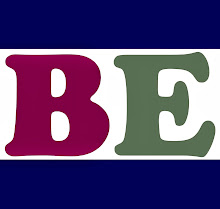The problem for the American economy is that business households have shut up shop and stopped spending. After a couple of decades of borrow and spend, they had far too much debt and need to get their balance sheets in order. This creates a problem for business that produce consumer goods.
In a free economy, this falling demand would not be a problem. When households stop spending, interest rates usually fall. If households are saving more, banks can offer lower interest rates and still get the funding they need. If households stop borrowing, banks have to lower interest rates to attract borrowers. Increasing supply and falling demand both push interest rates down.
When interest rates fall, numerous investments projects, which previously could not make a reasonable return, suddenly become viable. The result is increasing demand for investment goods. Some businesses will respond to that demand by shifting resources from the production of consumer goods to the production of investment goods. This adjustment may take a couple of quarters, but by shifting the mix of production away from consumption to investment, the slack in the economy is quickly taken up.
More important, the resulting build up of capital goods tends to make the economy even more productive in the future. Then when household start consuming again, the extra capital makes the economy more productive, so the demand for extra goods is easily met. There is no need to have a demand driven recession.
Unfortunately, America is not a free economy and interest rates are fixed by the Fed. Although households and businesses are saving more, the Fed has left interest rates unchanged, so the signal that declining interest rates should give to businesses has not gone through. Worse still, the Fed held interest too low during much of the decade. This sent the wrong signal to businesses, and may investment projects were undertaken that would not have been viable, if interest rates had been at an appropriate level. The housing boom was part of that.
Artificially low interest rates caused households to borrow too much and business to produce too many investment goods. Debt eventually catches up, and people and businesses realise that they need to reduce debt. Households stop buying consumer good to get out of debt. This is the cause of the current recession.
In a free market, business would switch to producing investment goods. The problem is that there is already a glut of capital goods, due to past overproduction in response to artificially low interest rates. Demand for investment is also goods declining, which exacerbates the recession.
The Fed has decided that Quantitative Easing is the solution. They are trying to solve the problems caused by too much debt, by encouraging households and businesses to take on more debt. They are trying to solve a problem of too much debt, by creating more debt. It may improve the economy in the short term, but it will store up problem for the future.
When a heroin addict goings into withdrawal, things get messy. One solution is to put them on methadone. It gets rid of the DTs, but it does not solve the underlying problem.
Quantative Easing is a methadone solution. It may provide temporary relief, but it will make the future worse.









